Inhibition of TRPC3 channels suppresses seizure susceptibility in the genetically-epilepsy prone rats
- PMID: 38851562
- PMCID: PMC11295865
- DOI: 10.1016/j.ejphar.2024.176722
Inhibition of TRPC3 channels suppresses seizure susceptibility in the genetically-epilepsy prone rats
Abstract
Transient receptor potential canonical 3 (TRPC3) channels are important in regulating Ca2+ homeostasis and have been implicated in the pathophysiology of chemically induced seizures. Inherited seizure susceptibility in genetically epilepsy-prone rats (GEPR-3s) has been linked to increased voltage-gated Ca2+ channel currents in the inferior colliculus neurons, which can affect intraneuronal Ca2+ homeostasis. However, whether TRPC3 channels also contribute to inherited seizure susceptibility in GEPR-3s is unclear. This study investigated the effects of JW-65, a potent and selective inhibitor of TRPC3 channels, on acoustically evoked seizure susceptibility in adult male and female GEPR-3s. These seizures consisted of wild running seizures (WRSs) that evolved into generalized tonic-clonic seizures (GTCSs). The results showed that acute administration of low doses of JW-65 significantly decreased by 55-89% the occurrence of WRSs and GTCSs and the seizure severity in both male and female GEPR-3s. This antiseizure effect was accompanied by increased seizure latency and decreased seizure duration. Additionally, female GEPR-3s were more responsive to JW-65's antiseizure effects than males. Moreover, JW-65 treatment for five consecutive days completely suppressed acoustically evoked seizures in male and female GEPR-3s. These findings suggest that inhibiting TRPC3 channels could be a promising antiseizure strategy targeting Ca2+ signaling mechanisms in inherited generalized tonic-clonic epilepsy.
Keywords: Brainstem seizures; Calcium signaling; Generalized tonic-clonic seizures; Inherited epilepsy; TRPC3 channels.
Copyright © 2024 Elsevier B.V. All rights reserved.
Conflict of interest statement
Declaration of competing interest GKSC, PN, and VKB have no relevant affiliations or financial involvement with any organization or entity with a financial interest or conflict with the subject matter or materials discussed in the manuscript. This includes employment, consultancies, honoraria, stock ownership or options, expert testimony, grants or patents received or pending, or royalties. WL is one of the inventors of JW-65 and may have financial interests.
Figures
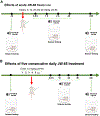
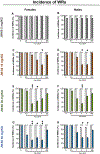
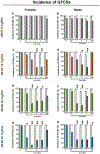
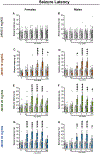

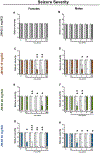
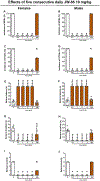
Similar articles
-
Activation of Calcium-Activated Chloride Channels Suppresses Inherited Seizure Susceptibility in Genetically Epilepsy-Prone Rats.Biomedicines. 2022 Feb 15;10(2):449. doi: 10.3390/biomedicines10020449. Biomedicines. 2022. PMID: 35203658 Free PMC article.
-
Idiopathic (Genetic) Generalized Epilepsy.2024 Feb 12. In: StatPearls [Internet]. Treasure Island (FL): StatPearls Publishing; 2025 Jan–. 2024 Feb 12. In: StatPearls [Internet]. Treasure Island (FL): StatPearls Publishing; 2025 Jan–. PMID: 31536218 Free Books & Documents.
-
Inhibition of transient potential receptor vanilloid type 1 suppresses seizure susceptibility in the genetically epilepsy-prone rat.CNS Neurosci Ther. 2018 Jan;24(1):18-28. doi: 10.1111/cns.12770. Epub 2017 Nov 3. CNS Neurosci Ther. 2018. PMID: 29105300 Free PMC article.
-
Antiepileptic drug monotherapy for epilepsy: a network meta-analysis of individual participant data.Cochrane Database Syst Rev. 2017 Jun 29;6(6):CD011412. doi: 10.1002/14651858.CD011412.pub2. Cochrane Database Syst Rev. 2017. Update in: Cochrane Database Syst Rev. 2017 Dec 15;12:CD011412. doi: 10.1002/14651858.CD011412.pub3. PMID: 28661008 Free PMC article. Updated.
-
Antiepileptic drug monotherapy for epilepsy: a network meta-analysis of individual participant data.Cochrane Database Syst Rev. 2017 Dec 15;12(12):CD011412. doi: 10.1002/14651858.CD011412.pub3. Cochrane Database Syst Rev. 2017. Update in: Cochrane Database Syst Rev. 2022 Apr 1;4:CD011412. doi: 10.1002/14651858.CD011412.pub4. PMID: 29243813 Free PMC article. Updated.
References
MeSH terms
Substances
Grants and funding
LinkOut - more resources
Full Text Sources
Medical
Miscellaneous

